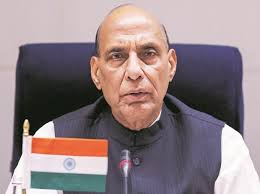Defence Ministry kicks off overhaul of acquisition procedure as big-ticket, indigenous military buys take centrestage

India is taking a decisive step to strengthen its defence sector. The Ministry of Defence (MoD) has launched a major overhaul of the military acquisition process. This move aims to cut delays, simplify procedures, and place Indian-made defence equipment at the core of future purchases. The change also aligns with the country’s ‘Aatmanirbhar Bharat’ (self-reliant India) vision.
Indigenous Capability Now a Top Priority
For years, India has ranked among the top defence importers globally. While imports have helped build military strength, they also expose strategic vulnerabilities. To counter this, the government has steadily pushed for indigenisation.
The new acquisition reforms continue this push. They ensure priority is given to defence equipment that is developed and built in India. This includes systems from DRDO, defence public sector undertakings (DPSUs), and private Indian firms.
What the Overhaul Includes
The MoD’s updated acquisition framework focuses on four key areas:
- Faster Procurement Timelines
The long delays in approving and receiving defence equipment have drawn criticism. To fix this, the Ministry will now enforce tighter deadlines. A digital tracking system will also monitor progress at every stage. - Preference for Indian-Made Equipment
The revised rules will favour equipment made in India. The Ministry also plans to define what counts as “indigenously designed and developed.” This will bring clarity to bidders and reduce confusion in tenders. - More Transparency and Simpler Procedures
The process will become clearer and more predictable. All stages—from need identification to contract management—will follow defined standards. This will help prevent delays caused by overlapping responsibilities. - Support for MSMEs
Small and medium defence firms will get more support. The government aims to ease their entry into the sector. Simplified bidding rules and funding support will help them compete with larger firms.
Momentum for Indian Projects
Several major indigenous projects are already gaining ground. These examples show the growing capabilities of Indian defence manufacturers:
- Tejas Light Combat Aircraft (LCA):
Already in use by the Indian Air Force, Tejas is a sign of India’s aeronautical progress. A ₹48,000 crore order for 83 more jets shows strong government backing. - Arjun Mk-1A Main Battle Tank:
Developed by DRDO, this advanced tank has passed Army trials. It’s now being inducted into service. - Advanced Towed Artillery Gun System (ATAGS):
Created by DRDO and private partners, this artillery gun is close to full deployment. - INS Vikrant – Indigenous Aircraft Carrier:
Built by Cochin Shipyard, this is India’s first homegrown aircraft carrier. It’s now undergoing sea trials.
These projects prove that Indian defence firms are ready for large-scale production. The new rules aim to ensure that such platforms are preferred in future deals.
Strategic Impact of the Move
This reform is not just about economics—it’s also about national security. By reducing import dependence, India gains more control over its military readiness. With rising global tensions, the ability to produce defence equipment at home is a clear advantage.
Moreover, the move will boost India’s profile as a global defence exporter. Several countries have shown interest in Indian systems such as Tejas, Akash missiles, and BrahMos. A transparent and efficient procurement system could help convert that interest into export deals.
Industry Reactions: Hopeful but Watchful
The domestic defence industry has welcomed the reform, though cautiously. Many experts say success depends on how well the new rules are applied.
One defence manufacturer noted, “The intent is strong, but we’ve seen good policies lose steam during execution. What matters now is timely implementation and industry dialogue.”
Others have stressed the need for clearer communication from the Ministry. They also hope for faster payment cycles, quicker testing, and more joint development opportunities with the armed forces.
Challenges Ahead
While the reform looks promising, its success depends on several factors. First, the armed forces must be fully on board. Coordination between the MoD, Army, Navy, and Air Force is essential. Second, testing and certification procedures need improvement. Delays in trials have slowed many indigenous projects in the past.
Finally, India must invest in research and development. Stronger innovation ecosystems will help produce cutting-edge weapons at home.
Looking Forward
Defence spending in India is expected to rise in the coming years. Tensions in the Indo-Pacific, advances in drone warfare, and cyber threats make modernisation urgent. With a streamlined acquisition process, India can make smarter and faster choices.
The new rules could also encourage more private players to enter the defence sector. If the policy delivers results, it may usher in a new era of defence manufacturing, job creation, and exports.
Conclusion
India’s defence acquisition overhaul is a bold and necessary step. By favouring indigenous systems and cutting red tape, the Ministry of Defence is building the foundation for long-term strategic independence. If implemented with care and consistency, this reform can transform India into a global defence manufacturing powerhouse.






